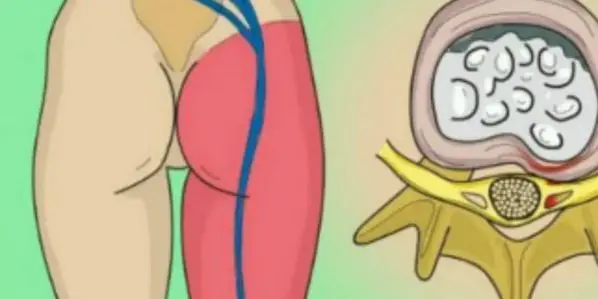Sciatica is characterized by pain in the lower back, which descends through the hip to the back of the leg, and in some cases affects the foot and toes. It usually occurs only on one side. The intensity of the pain varies. Most people recover without specific therapy.
What is Sciatica?
Sciatica, also known as lumbosciatica, is a neuralgia that is primarily characterized by pain in the area of the body innervated by n. ischiadicus. N. ischiadicus is the largest nerve in the human body, starting at the lower back and sending nerve branches to the lower leg and foot.
Symptoms of sciatica
The main symptom is sharp, burning pain accompanied by tingling, weakness, numbness and numbness. In most cases, it occurs unilaterally, ie it descends from the waist along one leg. Certain postures can affect the intensity of the pain, so the pain usually increases when standing, walking, kneeling or bending at the waist, while in the supine position, the pain partially decreases or disappears completely.
Reasons for the occurrence of Sciatica
There are several reasons for this type of neuralgia. Most often it is about:
• Piriformis syndrome. The piriformis muscle is located deep in the gluteal region (buttocks) and is located just above n. ischiadicus. If this muscle spasms, it can put pressure on the nerve, causing the symptoms of sciatica to appear. The most common causes of spasm of this muscle are long periods of sitting during the day and reduced physical activity. However, it can also occur when performing certain physical activities such as running or cycling, if the exercises for stretching and strengthening the muscles are not practiced before performing the activity.
• Herniated intervertebral disc in the lumbar region. The inner central part of the disc can herniate and put pressure on the nerve, causing pain.
• Degenerative disease of the intervertebral disc in the lumbar region. Disc degeneration is a normal process in aging, but in some people this process in the lumbar region can irritate the n. ischiadicus and pain may occur.
• Infections, injury or tumor.
• Pregnancy. Changes that the body goes through during pregnancy such as weight gain, fetal pressure and hormonal changes, can lead to sciatica.
• Spondylolisthesis. Due to a small stress fracture, the vertebral body dislocates forward, which compresses the nerve.
Sciatica can also occur secondarily as a result of a primary illness such as diabetes.
Exercises for squashed sciatic nerve (sciatica):
Stretching exercises can be very helpful as they help soothe the inflammation and thus the pain. Of course, it will not be easy at the beginning, so the exercises are performed slowly, with increasing exhalation stretching.
– Lie on a flat surface, bend the leg in which you feel pain and gently pull it towards the shoulder. When you feel the stretch, try to keep your leg in that position for 30 seconds. Straighten your leg, rest a bit and repeat this exercise two more times.
– Again, in a supine position, bend your legs at the knees and slowly pull them towards your chest, without separating your buttocks from the floor. Cross your legs as shown in the picture, grab the healthy leg with your hands and pull it. Hold the legs in this position for another 30 seconds, release them and return to the original position. Repeat this exercise two more times.
By performing these stretching exercises, you stimulate blood circulation, which eliminates muscle stagnation, and thus accelerates healing.

